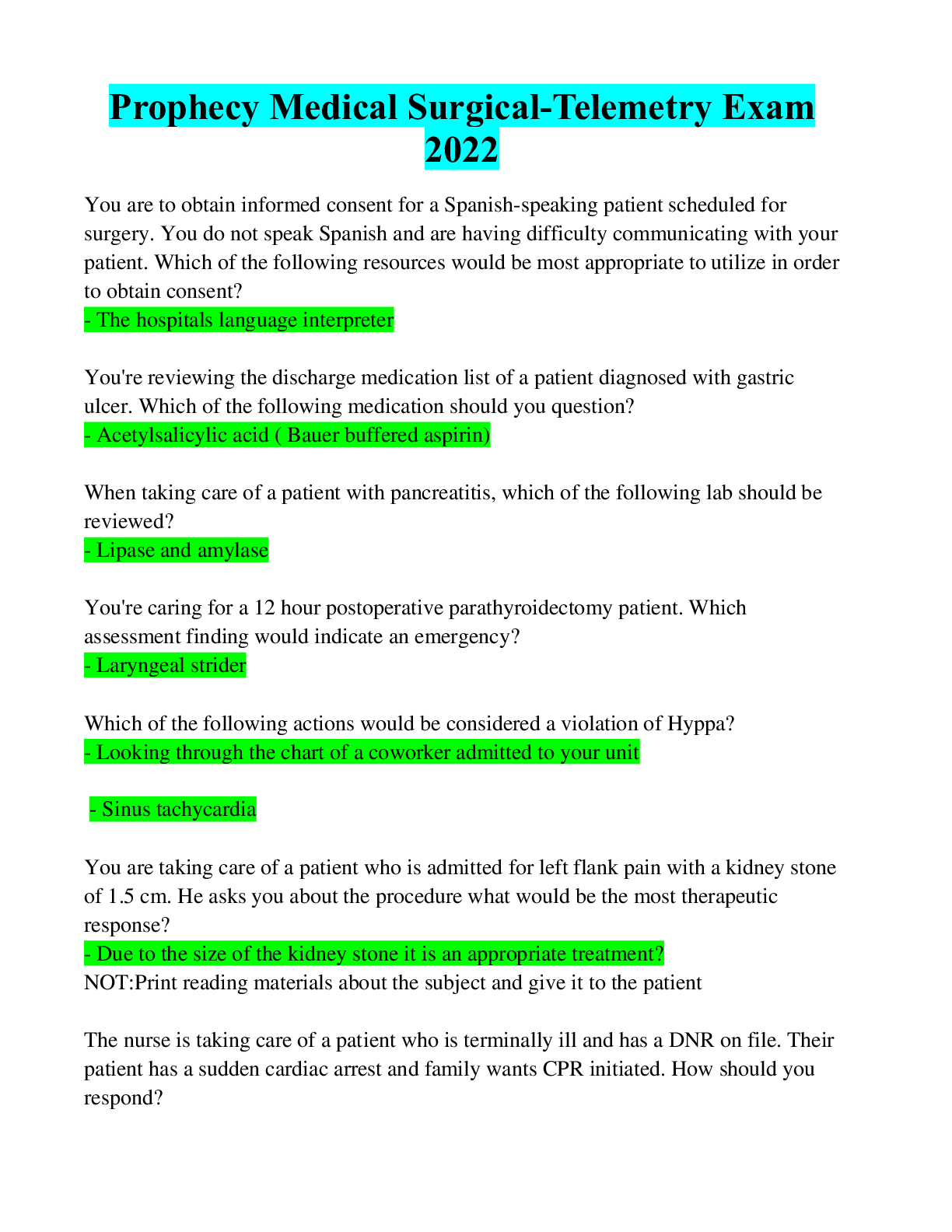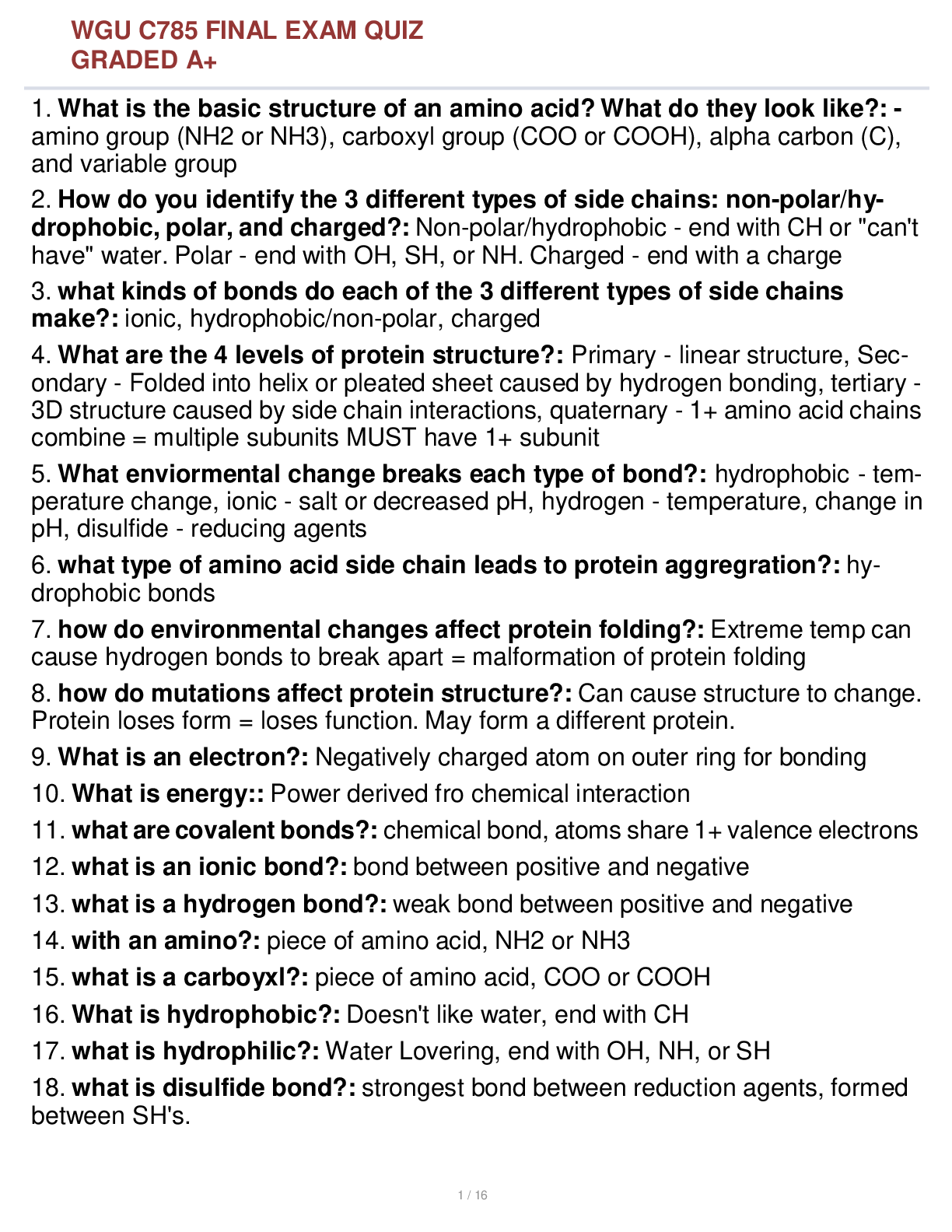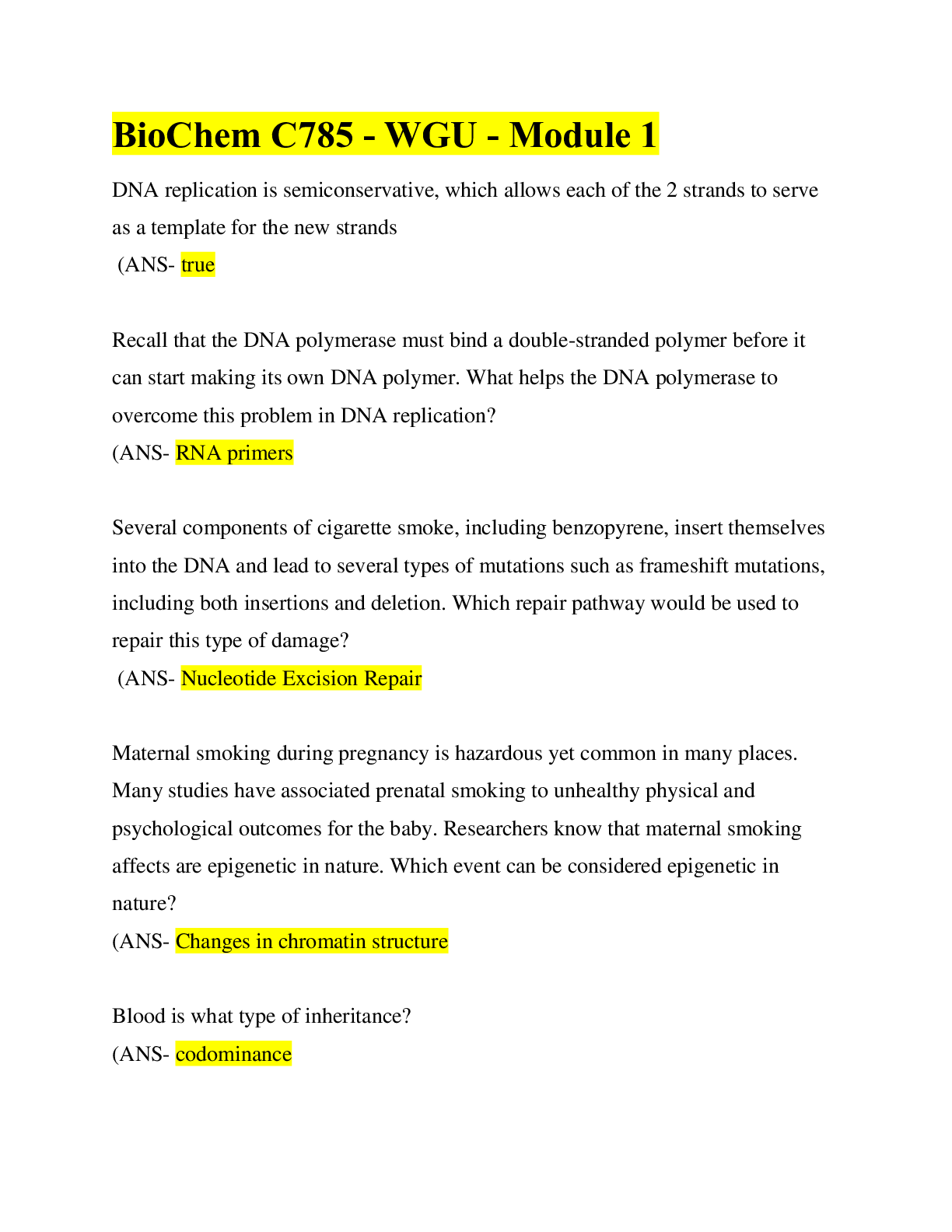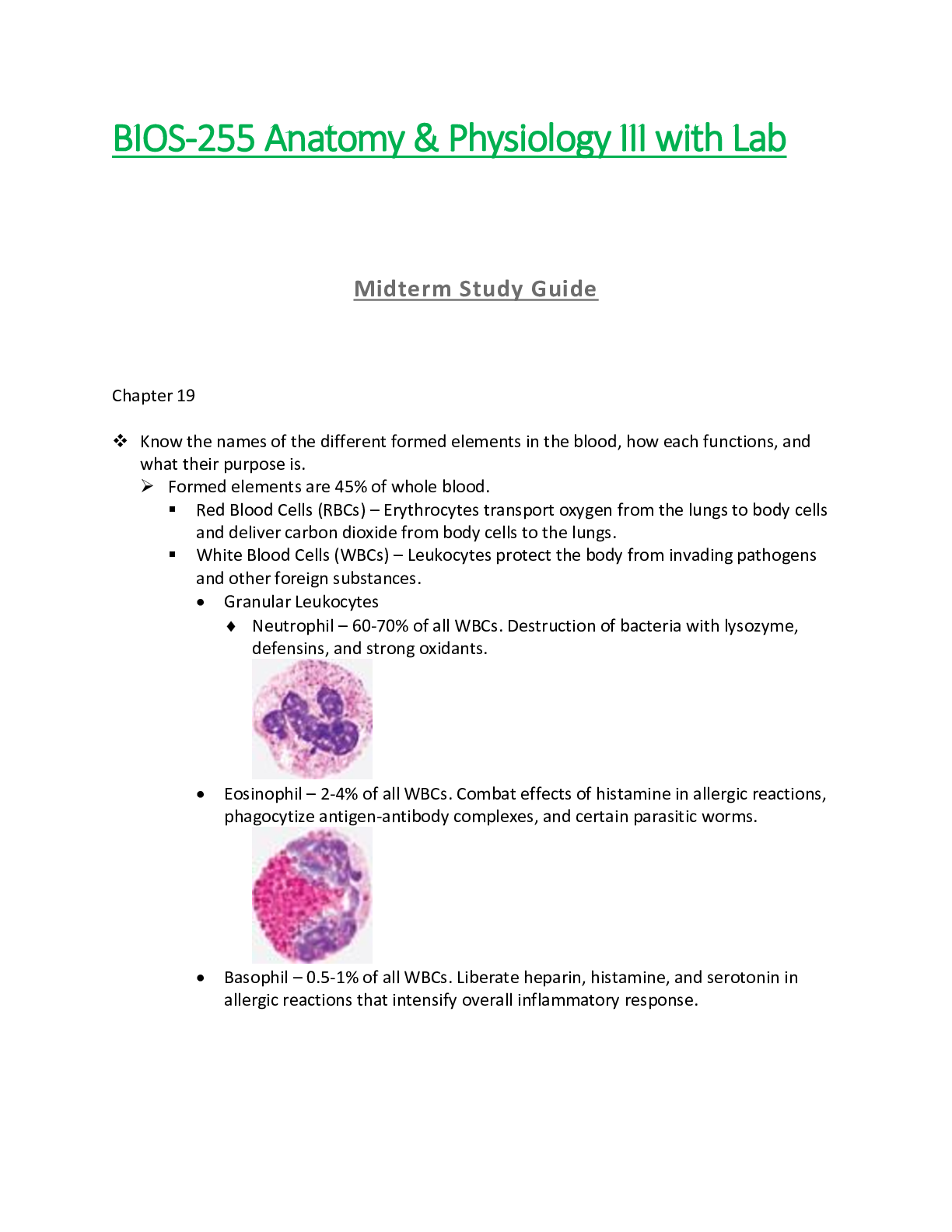Anatomy > STUDY GUIDE > Anatomy review Partial Review of Anatomy & Physiology all required revision needed (All)
Anatomy review Partial Review of Anatomy & Physiology all required revision needed
Document Content and Description Below
1. Levels of organization of the human body a. Chemical – made up of atoms & molecules b. Cell – basic structural and functional units of an organism i. There are many different types of cells ... in the body 1. Nerve cells 2. Blood cells 3. Muscle cells 4. Fat cells c. Tissue – groups of cells & the surrounding environment that work together to produce a specific function. i. There are 4 types of tissue in the body 1. Epithelial tissue 2. Connective tissue 3. Muscle tissue 4. Nervous tissue. d. Organ – organs are structures that are made of two or more different types of tissues, they have specific functions & a defined shape i. The heart is an example of an organ 1. It is made of muscle, connective, & nervous tissue 2. The tissues work in concert to move blood through the body 2. Systems (11) – consist of related organs that have a common function a. Integumentary i. Includes the skin & derived instructions ii. Protects internal organs iii. Helps maintain body temperature b. Skeletal i. Includes bones & joints ii. Provides support & protection to internal organs c. Muscular i. Includes skeletal muscle and it provides movement d. Nervous i. Includes brain, spinal cord, & nerves ii. Provides regulation of body functions & sensory perception e. Endocrine i. Includes hormone-producing cells & glands ii. Regulates homeostasis, growth & development f. Cardiovascular i. Includes blood, heart & blood vessels ii. Responsible for delivery of oxygen & nutrients to the tissues g. Lymphatic & Immune i. Includes lymphatic vessels & fluid ii. Involved in the defense against infection h. Respiratory i. Includes lungs & airways i. Involved in the absorption of oxygen & release of carbon dioxide i. Digestive i. Includes organs of the gastrointestinal tract ii. Responsible for absorption of nutrients j. Urinary i. Includes the kidneys, ureters, & bladder ii. Responsible for electrolyte balance & waste removal k. Reproductive i. Includes the reproductive organs in males and females ii. It controls the biological process by which new individuals are produced 3. Homeostasis – the process through which a nearly stable internal environment is maintained in the body so that cellular functions can proceed at maximum efficiency. 4. Anatomical Planes and Sections a. Coronal – separates the body into front & back halves b. Sagittal – separates the body into left and right halves c. Transverse – separates the body into superior and inferior halves 5. Directional Terms a. Superior – above, or closer to the head b. Inferior – below or closer to the feet c. Anterior – toward the front d. Posterior – toward the back e. Medial – toward the midline f. Lateral – away from the midline (closer to the sides) 6. Chemical Basis of Life a. Atoms & Elements i. Atoms form bonds by gaining, losing, or sharing electrons ii. Bonding occurs when it produces a more stable electron arrangement iii. Covalent bonds 1. Are formed when atoms share electrons 2. They are very strong bonds 3. Are the major type in organic chemicals iv. Atoms become ions when they gain or lose electrons 1. Ionic bonds 2. are weaker than covalent bonds 3. Tend to dissociate in water v. Hydrogen bonds 1. Are weak intra- or inter- molecular attractions between molecules with a net dipole 2. Unequal sharing of electrons between H and an electronegative atom, such as O or N, creates dipoles 7. Organic Chemical Bonds a. Single Bonds i. Atoms share one pair of electrons b. Double Bonds i. Atoms share 2 pairs of electrons c. Triple Bonds i. Atoms share 3 pairs of electrons Common Functional Groups: d. Organic Molecules i. Monosaccharides 1. Contain C, H, and O (1:2:1) 2. Provide energy via metabolism (Glycolysis, Krebs cycle) ii. Amino Acids 1. R-group specifies the identity (20 standard) as well as H2O solubility. 2. Amide bonding forms peptides and proteins (e.g. enzymes) iii. Fatty Acids 1. Are hydrocarbon chain plus a carboxyl group 2. Forms ester bonds with glycerol to make glycerides iv. Nucleotides 1. Are polymers which function as genetic material a. DNA = phosphate(s), base (G,T,A,C) , deoxyribose b. RNA = phosphate(s), base (G,U,A,C), ribose v. Buffer solutions [Show More]
Last updated: 2 years ago
Preview 1 out of 10 pages
.png)
Buy this document to get the full access instantly
Instant Download Access after purchase
Buy NowInstant download
We Accept:

Reviews( 0 )
$10.00
Can't find what you want? Try our AI powered Search
Document information
Connected school, study & course
About the document
Uploaded On
Jun 01, 2021
Number of pages
10
Written in
Additional information
This document has been written for:
Uploaded
Jun 01, 2021
Downloads
0
Views
165








.png)

.png)













